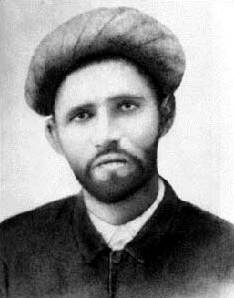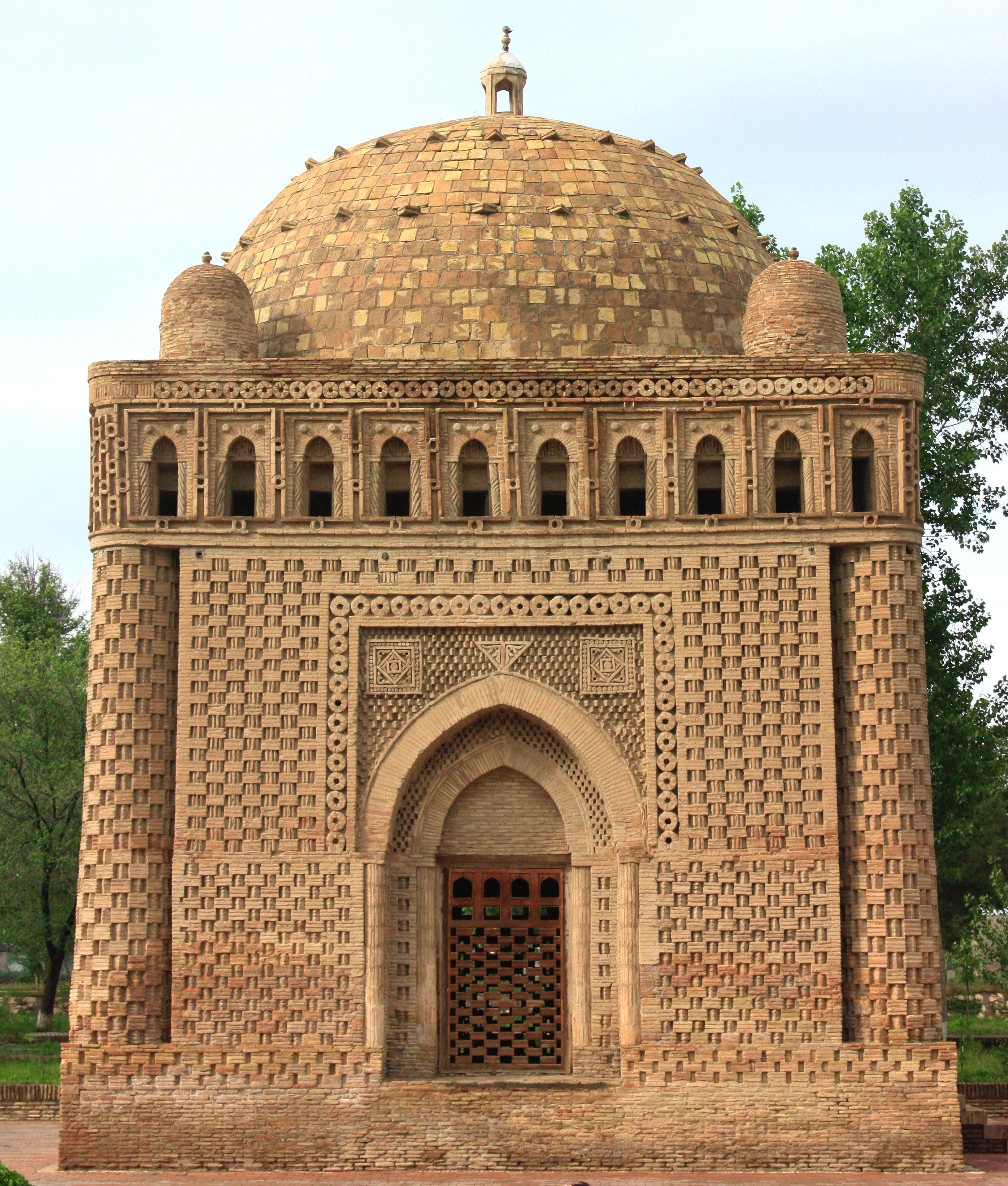|
Quaid-i-Azam
Muhammad Ali Jinnah (, ; born Mahomedali Jinnahbhai; 25 December 1876 – 11 September 1948) was a barrister, politician, and the founder of Pakistan. Jinnah served as the leader of the All-India Muslim League from 1913 until the inception of Pakistan on 14 August 1947, and then as the Dominion of Pakistan's first governor-general until his death. Born at Wazir Mansion in Karachi, Jinnah was trained as a barrister at Lincoln's Inn in London. Upon his return to India, he enrolled at the Bombay High Court, and took an interest in national politics, which eventually replaced his legal practice. Jinnah rose to prominence in the Indian National Congress in the first two decades of the 20th century. In these early years of his political career, Jinnah advocated Hindu–Muslim unity, helping to shape the 1916 Lucknow Pact between the Congress and the All-India Muslim League, in which Jinnah had also become prominent. Jinnah became a key leader in the All-India Hom ... [...More Info...] [...Related Items...] OR: [Wikipedia] [Google] [Baidu] |
Dina Wadia
Dina Wadia (born Dina Jinnah; 15 August 19192 November 2017) was the daughter of Muhammad Ali Jinnah, the founding father of Pakistan and Rattanbai Petit. She belonged to the prominent Jinnah family through her father, the Petit family through her mother, and to the Wadia family through her marriage to Neville Wadia. Early life and background Dina was born in London, shortly after midnight, on 15 August 1919, to the founder of Pakistan, Muhammad Ali Jinnah (often formally referred to as "Quaid-i-Azam"), and his second wife, Rattanbai Petit (whose name was legally amended to "Maryam Jinnah" after her conversion to Islam and marriage, though she did not use her new name). As Stanley Wolpert's ''Jinnah of Pakistan'' records: "Oddly enough, precisely twenty-eight years to the day and hour before the birth of Jinnah's other offspring, Pakistan". Her premature arrival was unexpected — her parents were at the theatre, but "were obliged to leave their box hurriedly." ... [...More Info...] [...Related Items...] OR: [Wikipedia] [Google] [Baidu] |
Jinnah's Birthday
Jinnah's Birthday, officially Quaid-e-Azam Day and sometimes known as Quaid Day, is a public holiday in Pakistan observed annually on 25 December to celebrate the birthday of the founder of Pakistan, Muhammad Ali Jinnah, known as ''Quaid-i-Azam'' ("Great Leader"). A major holiday, commemorations for Jinnah began during his lifetime in 1942, and have continued ever since. The event is primarily observed by the government and the citizens of the country where the national flag is hoisted at major architect structures such as private and public buildings, particularly at the top of Quaid-e-Azam House in Karachi. History Muhammad Ali Jinnah (1876–1948) was the founder and first governor-general of Pakistan. He is among the most revered leaders in the country's history, and often referred to as ''Qaid-e-Azam'', meaning "Great Leader". In 1942, numerous events commemorated Jinnah on his birthday, 25 December: the All-India Muslim League organised a fund for the poor and Liaquat ... [...More Info...] [...Related Items...] OR: [Wikipedia] [Google] [Baidu] |
Rattanbai Petit
Rattanbai Jinnah (''née'' Petit; 20 February 1900 – 20 February 1929), also known as Ruttie Jinnah, was the wife of Muhammad Ali Jinnah, an important figure in the creation of Pakistan and the country's founder. Additionally, Rattanbai Petit belonged to some of the most influential families of the Subcontinent, the Petit family, through her father; and the Jinnah family through her marriage. Her daughter Dina Wadia married Bombay Dyeing chairman Neville Wadia, of the Wadia family. Family and background Rattanbai Petit (often informally called "Ruttie") was born on 20 February 1900 in Bombay, Bombay Presidency, British India, into the extremely affluent and well-connected Petit family that belonged to the Parsi community. She was the only daughter of the businessman Sir Dinshaw Petit, the second baronet of Petit, and his wife Lady Dinabai Petit. Her paternal grandfather, Dinshaw Maneckji Petit, the first baronet, had built some of the earliest cotton mills in India. He was a ... [...More Info...] [...Related Items...] OR: [Wikipedia] [Google] [Baidu] |
Wazir Mansion
The Wazir Mansion ( ur, ) known officially as Quaid-i-Azam Birthplace MuseumWazir Mansion forgotten? Dawn (newspaper), Published 26 December 2009, Retrieved 20 August 2020 is a former family home in the district of , , which is considered the birthplace of the country's founder, |
Mazar-e-Quaid
Mazar-e-Quaid ( ur, , lit=Mausoleum of the Leader) is the resting place of Muhammad Ali Jinnah situated in Karachi, Sindh. The marble monument comprises a surface area of . It is surrounded by formal gardens and designed in an Islamic modernist style. Following Jinnah's death in 1948, his tomb was capped by a small dome and remained in poor conditions. In 1957, the Government of Pakistan held an international competition for the design of the mausoleum. The design of the victorious William Whitfield attained prominent distinction, though his work was rejected by Jinnah's sister Fatima. She sought the support of the public and subsequently approved the design of Jinnah's close friend Yahya Merchant in 1960. The mausoleum's construction concluded in 1971 and was inaugurated by Yahya Khan, the then-president of Pakistan. Mazar-e-Quaid is regarded as one of the iconic monuments of Pakistan. Along with Jinnah, it entombs several other activists of the Pakistan Movement, making it a ... [...More Info...] [...Related Items...] OR: [Wikipedia] [Google] [Baidu] |
Lucknow Pact
The Lucknow Pact was an agreement reached between the Indian National Congress and the Muslim League (AIML) at a joint session of both the parties held in Lucknow in December 1916. Through the pact, the two parties agreed to allow representation to religious minorities in the provincial legislatures. The Muslim League leaders agreed to join the Congress movement demanding Indian autonomy. Scholars cite this as an example of a consociational practice in Indian politics. Bal Gangadhar Tilak represented the Congress while framing the deal, and Muhammad Ali Jinnah (who joined the Muslim League in 1913) participated in this event. Background The British had announced under immense pressure from Indian masses, in order to satisfy the Indians, that they will be considering a series of proposal that would lead to at least half of the members of the Executive Council being elected and the Legislative Council having a majority of elected members needed. Both the Congress and the Muslim Le ... [...More Info...] [...Related Items...] OR: [Wikipedia] [Google] [Baidu] |
Hindu–Muslim Unity
Hindu–Muslim unity is a religiopolitical concept in the Indian subcontinent which stresses members of the two largest faith groups there, Hindus and Muslims, working together for the common good. The concept was championed by various persons, such as leaders in the Indian independence movement, namely Mahatma Gandhi and Khan Abdul Ghaffar Khan, as well as by political parties and movements, such as the Indian National Congress, Khudai Khidmatgar and All India Azad Muslim Conference. Those who opposed the partition of colonial India often adhered to the doctrine of composite nationalism. History In Mughal India, the emperor Akbar advocated for Hindu–Muslim unity, appointing both Hindus and Muslims as officials in his court. Akbar participated and promoted festivals of both Hinduism and Islam. He also created feasts, such as Phool Walon Ki Sair (although this festival is said to have been started much later in the nineteenth century under Akbar II) to be celebrated by citize ... [...More Info...] [...Related Items...] OR: [Wikipedia] [Google] [Baidu] |
Bombay High Court
The High Court of Bombay is the high court of the states of Maharashtra and Goa in India, and the union territory of Dadra and Nagar Haveli and Daman and Diu. It is seated primarily at Mumbai (formerly known as Bombay), and is one of the oldest high courts in India. The High Court has regional branches at Nagpur and Aurangabad in Maharashtra and Panaji, the capital of Goa. The first Chief Justice, the Attorney General and Solicitor General of Independent India were from this court. Since India's Independence, 22 judges from this court have been elevated to the Supreme Court and 8 have been appointed to the office of Chief Justice of India. The court has Original Jurisdiction in addition to its Appellate. Judgements issued by this court can be appealed ''only'' to the Supreme Court of India. The Bombay High Court has a sanctioned strength of 94 judges (71 permanent, 23 additional). The building is part of The Victorian and Art Deco Ensemble of Mumbai, which was added to t ... [...More Info...] [...Related Items...] OR: [Wikipedia] [Google] [Baidu] |
British Raj
The British Raj (; from Hindi ''rāj'': kingdom, realm, state, or empire) was the rule of the British Crown on the Indian subcontinent; * * it is also called Crown rule in India, * * * * or Direct rule in India, * Quote: "Mill, who was himself employed by the British East India company from the age of seventeen until the British government assumed direct rule over India in 1858." * * and lasted from 1858 to 1947. * * The region under British control was commonly called India in contemporaneous usage and included areas directly administered by the United Kingdom, which were collectively called British India, and areas ruled by indigenous rulers, but under British paramountcy, called the princely states. The region was sometimes called the Indian Empire, though not officially. As ''India'', it was a founding member of the League of Nations, a participating nation in the Summer Olympics in 1900, 1920, 1928, 1932, and 1936, and a founding member of the United Nations in San F ... [...More Info...] [...Related Items...] OR: [Wikipedia] [Google] [Baidu] |
London
London is the capital and largest city of England and the United Kingdom, with a population of just under 9 million. It stands on the River Thames in south-east England at the head of a estuary down to the North Sea, and has been a major settlement for two millennia. The City of London, its ancient core and financial centre, was founded by the Romans as '' Londinium'' and retains its medieval boundaries.See also: Independent city § National capitals The City of Westminster, to the west of the City of London, has for centuries hosted the national government and parliament. Since the 19th century, the name "London" has also referred to the metropolis around this core, historically split between the counties of Middlesex, Essex, Surrey, Kent, and Hertfordshire, which largely comprises Greater London, governed by the Greater London Authority.The Greater London Authority consists of the Mayor of London and the London Assembly. The London Mayor is distinguished fr ... [...More Info...] [...Related Items...] OR: [Wikipedia] [Google] [Baidu] |
Lincoln's Inn
The Honourable Society of Lincoln's Inn is one of the four Inns of Court in London to which barristers of England and Wales belong and where they are called to the Bar. (The other three are Middle Temple, Inner Temple and Gray's Inn.) Lincoln's Inn, along with the three other Inns of Court, is recognised as being one of the world's most prestigious professional bodies of judges and lawyers. Lincoln's Inn is situated in Holborn, in the London Borough of Camden, just on the border with the City of London and the City of Westminster, and across the road from London School of Economics and Political Science, Royal Courts of Justice and King's College London's Maughan Library. The nearest tube station is Holborn tube station or Chancery Lane. Lincoln's Inn is the largest Inn, covering . It is believed to be named after Henry de Lacy, 3rd Earl of Lincoln. History During the 12th and early 13th centuries, the law was taught in the City of London, primarily by the clergy. Then two ... [...More Info...] [...Related Items...] OR: [Wikipedia] [Google] [Baidu] |





